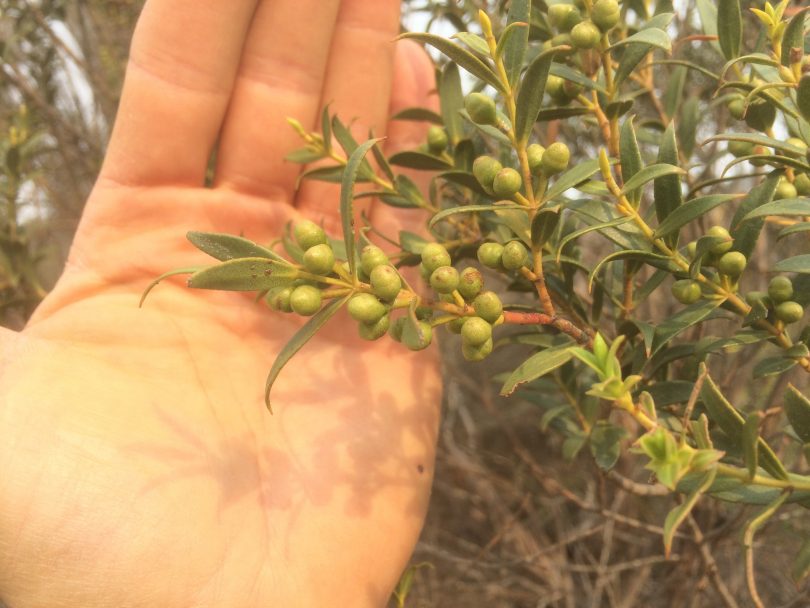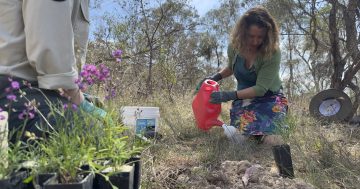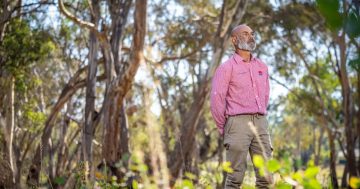
Mongarlowe Mallee is critically endangered. Photo: Andy Taylor.
A medium-sized shrub that grows only in isolated areas north of Braidwood is in danger of being lost forever without human intervention.
With just six known remaining plants, the Mongarlowe Mallee (Eucalyptus recurva) is on the critically endangered list – but there is hope.
South East Local Land Services is partnering with the Saving our Species (SoS) Program run by the Department of Planning Industry and Environment (DPIE) NSW in a bid to try and save the rare plant which grows only in four locations on the NSW Southern Tablelands.
Three of these are about two kilometres apart near Mongarlowe and the fourth is about 30 km away near Windellama.
“The Mongarlowe Mallee is a Commonwealth-listed critically endangered species,” South East Local Land Services spokesman Andy Taylor said.
“There are only six known individual plants in existence.”
The main distinguishing character of this species is its conspicuously recurved leaf tips.
“These are very rare in eucalypts and are much more developed in Mongarlowe Mallee than in any of its close relatives,” Mr Taylor said.
The leaves themselves are quite small – only three centimetres long and eight millimetres wide. Their white flowers are arranged in clusters of three on a short (5.5 mm) common stalk and flowering occurs in late December to early January.
Seed development on the remaining plants is scarce, due mainly to the distance between the plants preventing cross pollination.
“So, these last known remaining individuals are very special plants and are crucial for the survival of the species,” Mr Taylor said.
Thankfully, the project was able to protect the remaining Mongarlowe Mallees from the Black Summer bushfires.
Aerial surveys were conducted by helicopter in March and will be carried out again in December 2021 to coincide with the flowering season in the hope of identifying previously unrecorded plants but scientists believe the known plants represent a relic of a more widespread ancestor and there’s unlikely to be more.
In the meantime, the Australian National Botanic Gardens (ANBG) has been tasked with re-trialling propagation techniques to get new plants growing – a tricky process for one of the rarest eucalypts in Australia.
In May last year they had some success with germination of seedlings from seeds collected in March 2020 which was a major milestone for the project.
Mr Taylor said the collaborative project demonstrated the value of government agencies working together to address knowledge gaps and secure a very rare and distinct species.
Original Article published by Kim Treasure on About Regional.
















